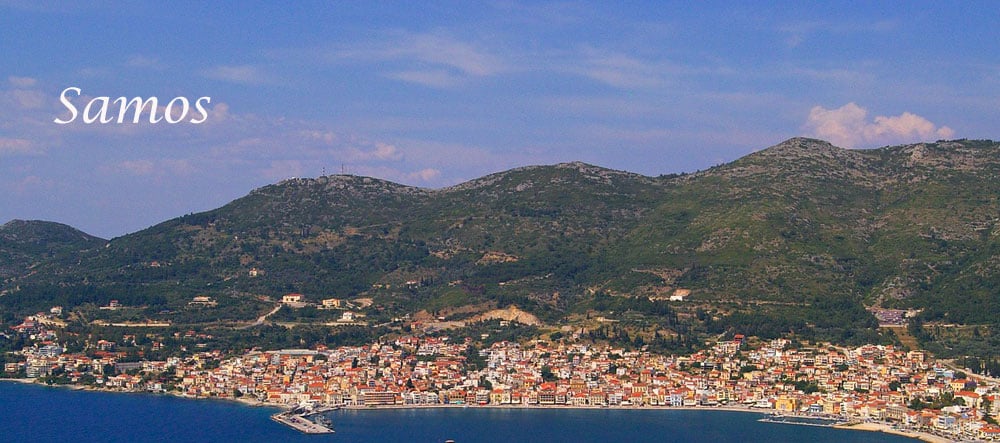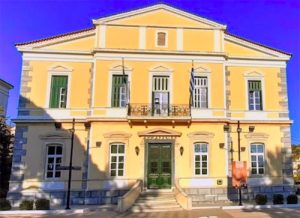Vathy the capital of Samos
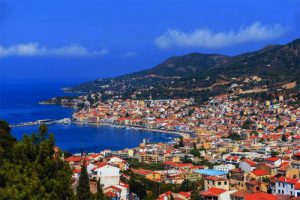
The first inhabitants developed commercial relations with the Turks and the Russians, as a result of which they made this deserted part of the island the most beautiful city of the prefecture. It has beautiful mansions, two important museums, several public buildings of architectural interest, as well as notable churches.
In the past, it was called Limin Vatheos from the port where it was built. It was later renamed Samos to distinguish it from the Vatheos community. Already during the Hegemony period, it was the capital of the island until the union with Greece in 1913.
Local attractions
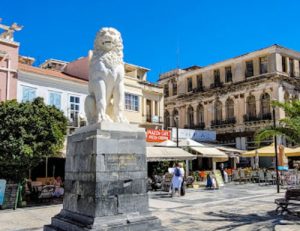
The impressive Pythagoras Square, where the famous marble lion has been erected, a remarkable monument that has been placed in the square since 1930, commemorating the heroic battle of Kavos Fonias.
A unique jewel of the city is the Municipal Garden, which was created during the Hegemony. There is the monument to those who fell in the wars of 1912-13.
The Town Hall is housed in a neoclassical building, which dates back to the end of the 19th century. In the years of the Hegemony (1834-1912) this building was the Parliament of Samians, while in 1950 the building was granted by the Greek state to the Municipality of Samos.
The Town Hall building also houses the Municipal Gallery, while the Post Office is temporarily operating on the ground floor. The Public Library is halfway down the waterfront.
The Historical Archive of Samos is housed in the same building. It’s worth a stroll along the market’s pedestrian street, where local products are on offer in abundance. Inside the city one can walk and visit the districts of the city, such as Katsouni, Melemeneika, Haroupies, Koutra, Prosfygika, Tabakika and Neapoli. A few meters above Pythagoras Square is Agios Nikolaos Square.
Agios Spyridonas is the church where the Assembly of Samians, chaired by Theodor Sofoulis, proclaimed the union of Samos with Greece. The marble bust is of the founder of the church and the museum, A. Paschalis. The monument to the right of the church is the hero of the Gendarmerie.
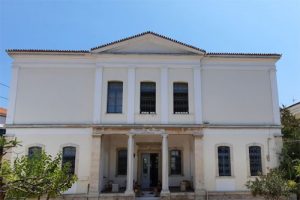
The Ecclesiastical Museum is housed on the ground floor of the Metropolis building and includes a large collection of rare relics. In the first room, among other things, the mantle of the ethnomartyr Patriarch Gregory V is exhibited as well as the epimaniacs of Chrysostom of Smyrna. In the second room, the walls are decorated with a multitude of portable icons, including one created by the famous iconographer Poulakis. The church library of Samos is housed in the same building.
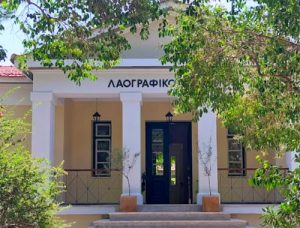
On the eastern side of the city is the Monastery of Agia Zoni, which was founded in 1695 by the monk Meletios. Wall paintings from the time have been preserved, while the Wood Carved Temple of the Temple is particularly impressive. In a beautiful location in the northeast of the city is built the monastery of Zoodochos Pigi, which dates from the middle of the 17th century. It has a unique view of the Asia Minor coast.
At a short distance from Vathi you will find the beaches of Roditses and Gangou, with their main characteristics being colorful pebbles and crystal clear waters.
